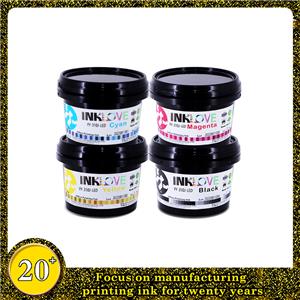What is the difference between UV offset ink and regular ink?
The key difference between UV offset ink and regular ink lies in how they dry:
Regular Ink (Offset Ink):
Absorbs into the printing surface (usually paper).
Drying time depends on the ink and substrate, but can take hours.
Limited to absorbent surfaces.

UV Offset Ink:
Dries through a process called curing, where exposure to ultraviolet (UV) light triggers a chemical reaction that hardens the ink.
Cures almost instantly (fraction of a second to few seconds).
Can be used on a wider variety of materials, including plastics and metals, besides paper.

Here's a table summarizing the key points:
| Feature | Regular Ink | UV Offset Ink |
| Drying Process | Absorption | UV Curing |
| Drying Time | Hours | Fraction of a second to seconds |
| Material Compatibility | Limited (mostly absorbent surfaces) | Wider variety (paper, plastics, metals) |
Additional Advantages of UV Ink:
Scratch and scuff resistant: Once cured, UV ink creates a very durable finish.
Reduced VOCs (Volatile Organic Compounds): UV inks often have lower emissions compared to solvent-based regular inks.
Faster turnaround times: Due to the rapid curing process, UV printing allows for quicker job completion.

Disadvantages of UV Ink:
Higher Cost: UV inks and the printing equipment required tend to be more expensive.
Safety Concerns: UV light exposure can be harmful, requiring proper safety measures in printing facilities.

In essence, regular ink is the traditional choice for printing on paper, while UV ink offers faster drying, wider material compatibility, and a more durable finish, but at a higher cost.





